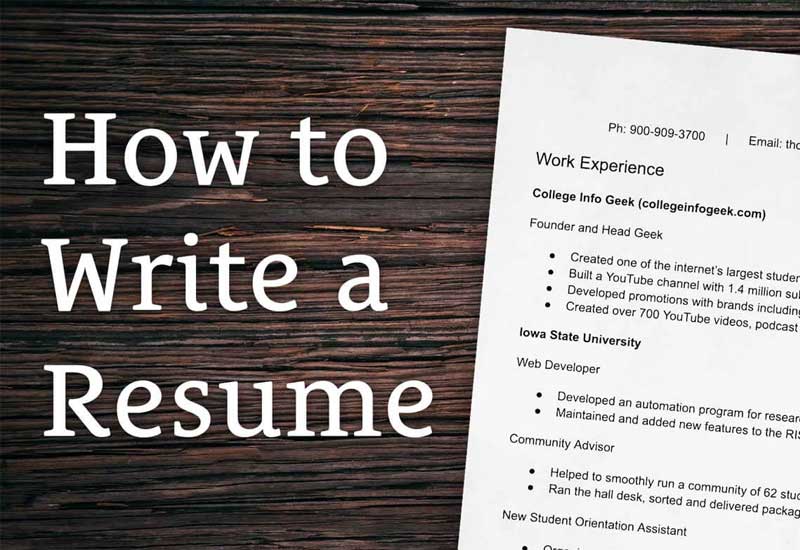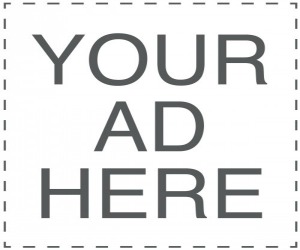Let’s face it: writing a resume can be intimidating. And the pressure to make it really sing can make the prospect of putting fingers to keyboard that much scarier. But writing the perfect resume doesn’t have to be terrifying. In fact, it can be easy — if you know what you’re doing.
That’s what this guide is for. We’ll take you through all the essential steps of crafting this career document, from how to structure its many sections to how to make sure a spelling error doesn’t sneak in. We promise that when you’re done, you’ll want to show it off to the world. (Luckily, you can do that on Glassdoor. Simply upload your resume here, and you’ll be ready to apply in an instant when you spot your dream job posted in our long list of job openings.)
What Is a Resume?
First things first: let’s define a resume. A resume is a summary of your work history, skills, and education. In this respect, a resume is different than a curriculum vitae — more commonly called a CV. A CV is a complete look at your career, covering every aspect of your education, work and experience without the restriction of length. But a resume is a summary of those experiences and skills, and typically covers only 10 years’ worth of employment. Unlike a CV, a resume should be tweaked and edited for each specific job for which you apply, and it should be just one or two pages long.
A resume is the most requested document in any job search — followed by the cover letter, of course. In fact, recruiters scrutinize job candidates’ resumes more closely than their cover letters. So let’s move on to how to structure it right.
Common Types of Resumes
Most professional resume writers will tell you that there are three main types of resumes: chronological, functional and combination.
Chronological Resume: A chronological resume is the format that you’re probably the most familiar with — this is the type of resume that focuses on your recent work history above all. List your positions in reverse chronological order, with the most recent positions at the top and the oldest ones at the bottom. Ultimately, the goal is to show how your positions leading up to this point have perfectly prepared you for the role you’re applying to.
Functional Resume: A functional resume, on the other hand, emphasizes the relevance of your experience. To create a functional resume, you’ll prominently feature your professional summary, your skills and a work experience section organized by how closely the positions relate to the one you’re applying to. This format is best for those who want to minimize resume gaps, or are transitioning into a new industry.
Combination Resume: As you might be able to guess, a combination resume borrows from both of the aforementioned formats. You’ll combine the professional summary and skills section of a functional resume with the work experience section of a chronological resume. This format is a powerful way to stand out to recruiters by emphasizing both your experience and skills, and is useful for many different types of job seekers.
How to Structure Your Resume
No two resumes will look exactly alike (nor should they!), but generally, resumes should have the following sections.
Header & Contact Info: At the top of your resume, always include a header containing your name. Your contact info (typically your phone number, personal email address and sometimes links to social profiles or personal websites) should be close by as well. After all, you don’t want there to be any confusion over who the resume belongs to, or make it difficult for recruiters or hiring managers to reach out to you. However, you may want to avoid putting your contact info in the header or footer of the document itself — the headers and footers can sometimes be overlooked by the software that scans your resume.
Professional Summary: The professional summary is a brief, one- to three-sentence section featured prominently on your resume that succinctly describes who you are, what you do and why you’re perfect for the job. In contrast with the largely out-of-date objective statement — a line that describes the type of career opportunity you’re looking for — professional summaries aren’t about what you want. Instead, they’re focused on the value you could bring to a potential employer. It’s worth noting that a professional summary isn’t an absolute must-have — if your resume is missing one, it probably won’t be a dealbreaker — but it can be a nice way to give time-pressed recruiters and hiring managers a quick, high-level overview of why you’re the right person for the job.
Skills: Once relegated to the bottom of resumes as an afterthought, the skills section has become more and more important as recruiters and hiring managers increasingly look for candidates with specialized backgrounds. Rather than making the folks reading your resume hunt through your bullet points to find your skills, it’s best to clearly list them. If they see right away that you have the ability to get the job done, they’re much more likely to take your resume seriously.
Work Experience: This critical section of a resume is where you detail your work history in a consistent and compelling format. The Work Experience section should include company names, locations, employment dates, roles and titles you held and most importantly, bullet points containing action verbs and data points that detail the relevant accomplishments of each position. This portion is essential for recruiters and hiring managers, who look to absorb information about your career experiences and connect your skills to what they’re looking for in a potential hire. Recruiters are often flooded with resume submissions and have to carefully source and identify quality candidates in a crowded pack — so make sure your work experience stands out.
Education: Since many jobs require a certain level of education, it’s important to mention your academic credentials on your resume. However, this section shouldn’t take up too much space. In most cases, simply listing where you went to school, when you attended and what degree you attained will be sufficient.
Additional Experience: An optional, but potentially very valuable, addition to your resume is Additional Experience. This is a catch-all section at the tail end of your resume that allows you to highlight volunteer experience, awards and hobbies. Again, it shouldn’t be too long — you don’t want it to detract from your skills or work experience — but it can be a good way to provide a more well-rounded picture of who you are.
Design & Formatting Tips
The subject matter of your resume is ultimately what recruiters care about most. However, that doesn’t mean you should slack off when it comes to design and formatting. A cluttered, visually confusing resume makes it more difficult to read, and therefore more likely that recruiters and hiring managers will cast it aside. On the other hand, a sleek, polished resume will have the opposite effect. Use these rules of thumb to ensure that your resume looks its best.
- Use an easy-to-read font of no less than 11 pt.
- Add margins of at least .7 inches.
- Make sure there’s sufficient white space between sections.
- Don’t go overboard with intricate design or decoration — touches of color are fine, but avoid any clashing or visually busy details.
- If you’re going to print out copies of your resume, invest in good paper and use a high-quality printer.
- Don’t save your resume as a PDF unless the application specifically says it accepts PDF files. Some applicant tracking systems scan PDFs as if they were one big image, which fails to capture your information.
- Keep your resume to 1-2 pages max, unless you’re in a field like academia or medicine and must cite papers and publications.
Want some specific examples? You can find attractive and effective resume templates here and here.
How to Edit Your Resume
You’ve written your resume, and read it twice, but that’s not enough. A good editing job will take a little longer — and some specific tactics meant to catch resume errors.
First, don’t attempt to edit your resume until it’s done. Yes, it can be difficult to leave a glaring error while you move on to write your skills section, but force yourself to finish your resume before you edit it. Why? You’ll save yourself time, and letting go of errors now could help you write a better first draft because you’re focusing on the writing itself. You’ll be glad you decided to go back and make all the edits at once.
Next, never try to edit your resume right after you’ve written it. In fact, you should give yourself a 24-hour break before editing your resume. With time away, you’ll see your resume with fresh eyes and for what it really is—not what you meant it to be.
When you give your resume a read, try reading your resume backward. It sounds odd — and it’s not always easy — but reading backward forces you to focus on each word, and helps you better catch both spelling and grammatical errors in the text.
Ask a friend or family member to read your resume, too. They may spot errors that you missed, or have suggestions for how to show yourself in an even better light.
Then, fact-check your resume. Check the spelling of proper nouns — think: company names, addresses, etc. — and make sure you have the current contact information for any references you’ve chosen to add. These things might have changed since you last applied for a job.
And lastly, be sure to look for common resume pitfalls before you press send.


